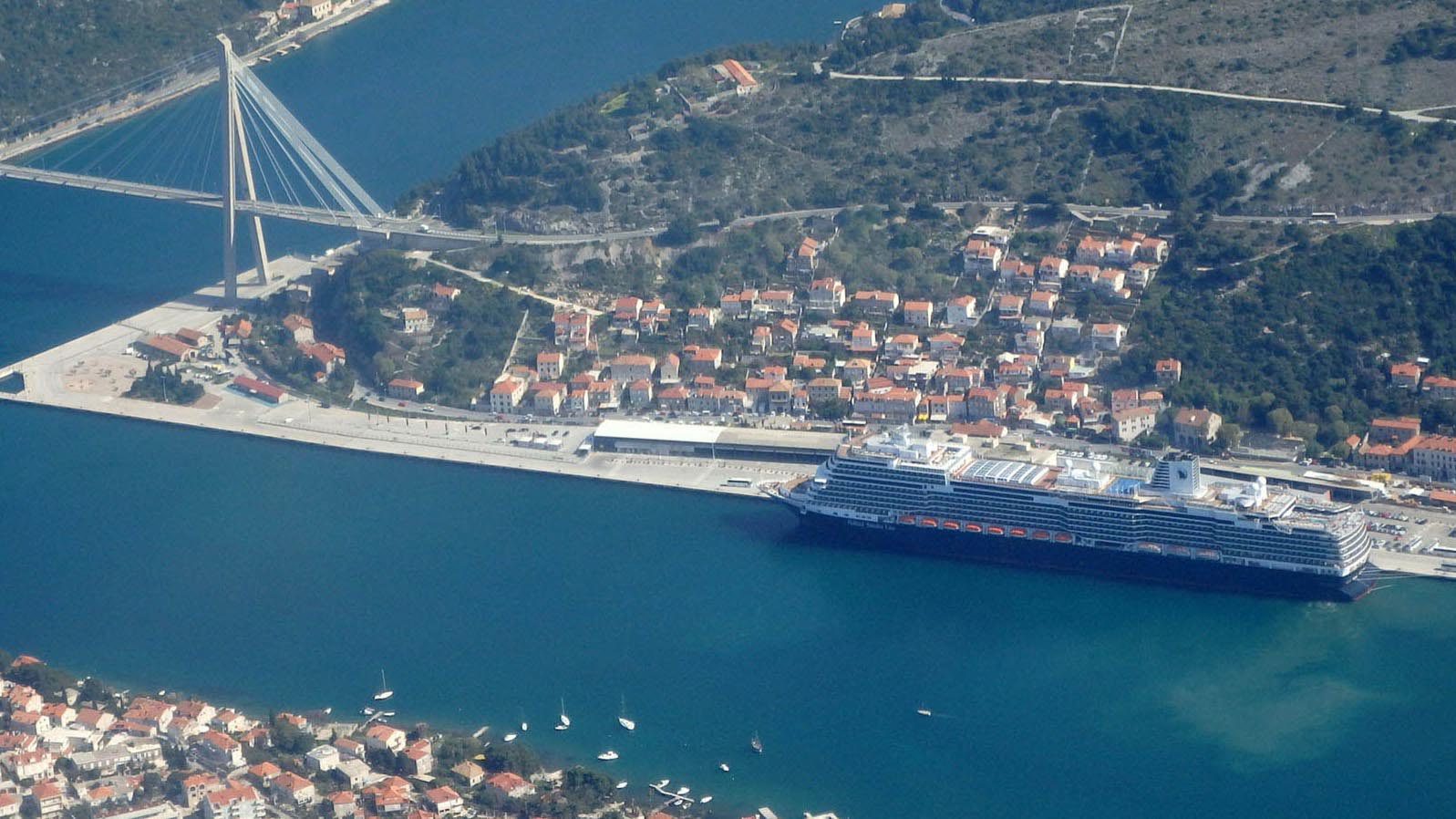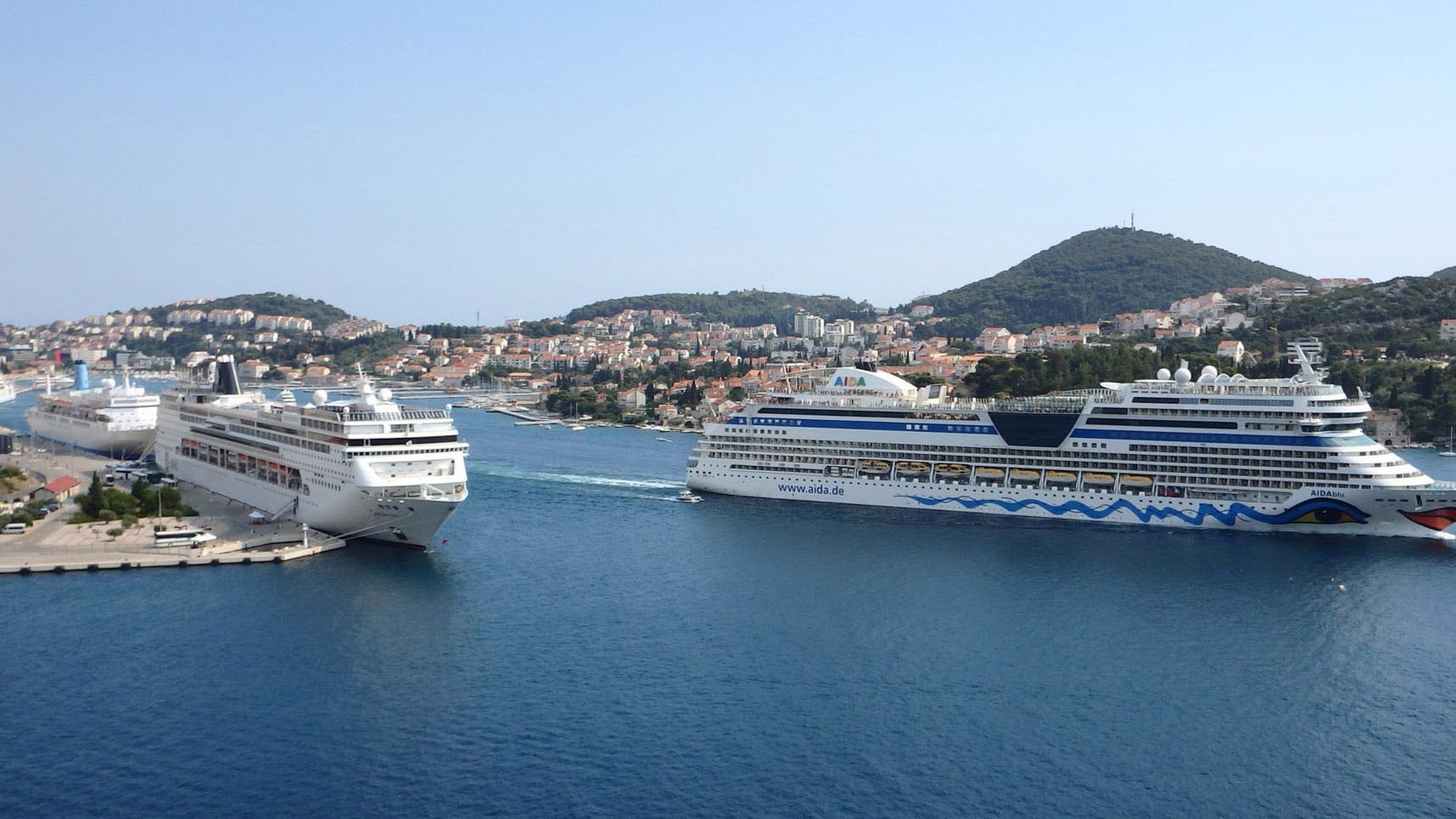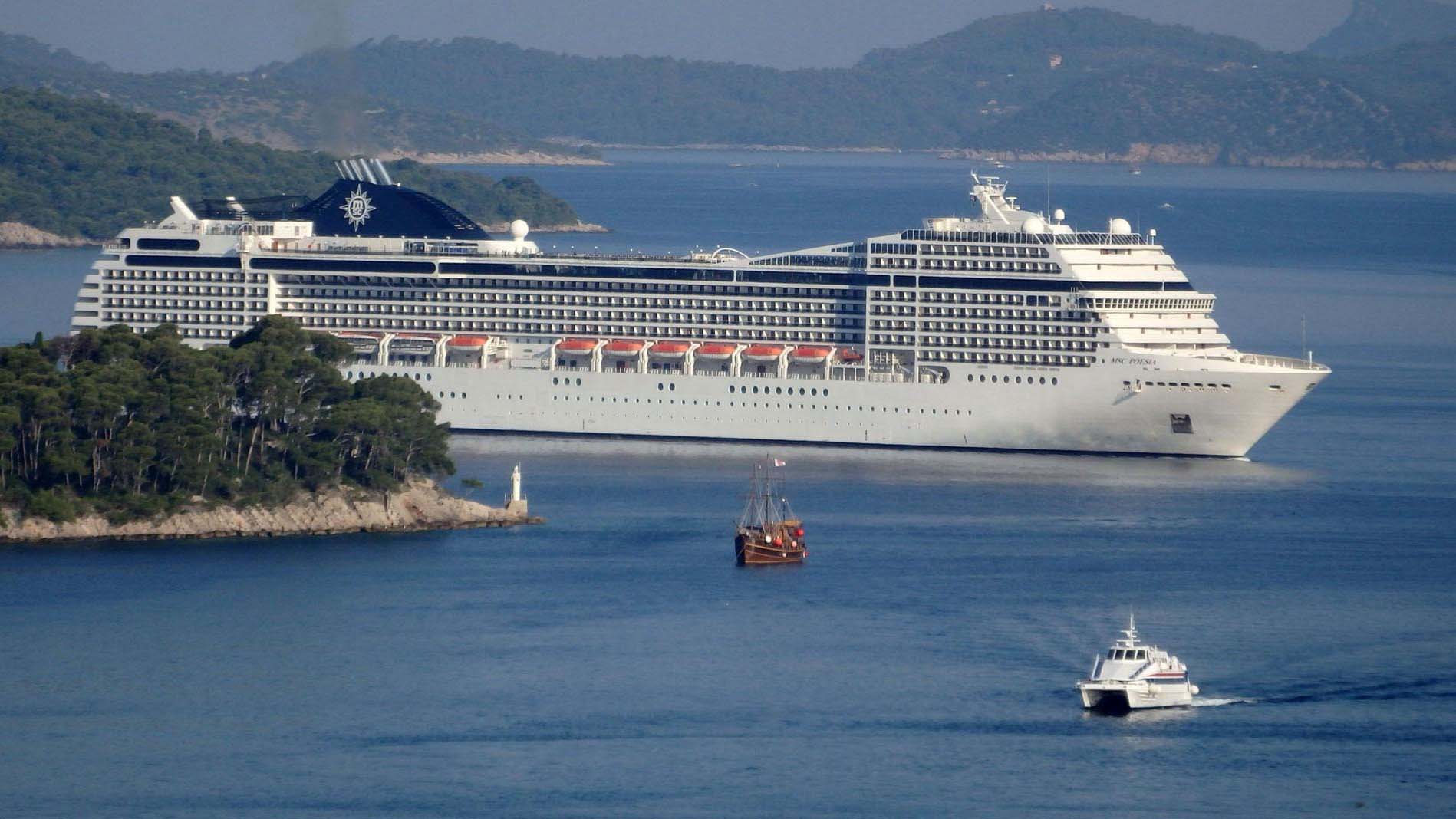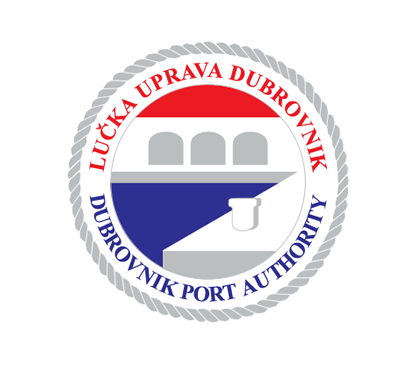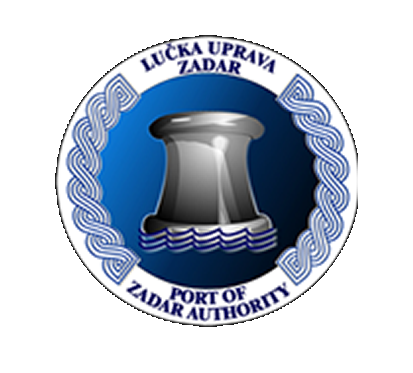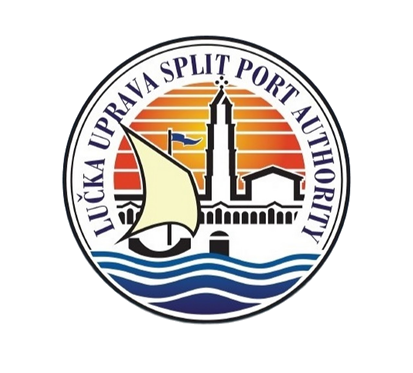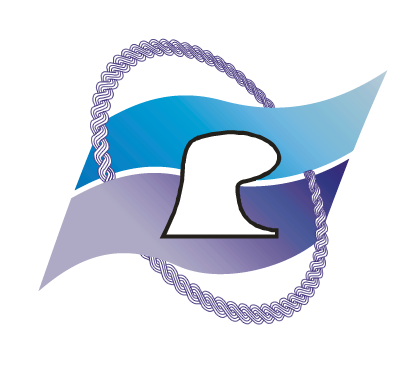ENVIRONMENTAL PROTECTION PROGRAMENVIRONMENTAL PROTECTION – ECOLOGICAL ASPECTS OF THE DEVELOPMENT OF THE PORT AREA
1. Environmental protection – ecological aspects of the development of the port area
The past twenty or so years have been characterized by great progress in environmental protection. The regulations have become increasingly strict toward the maritime economy. Vessels have become a focus of attention as a source of many pollutants (oil, sewage; harmful, hazardous and unhealthful substances; fecal contamination, waste and garbage, smoke, gases, steam and particles, ballast water, and paints and dyes with biostatics).
From the other side, measures are being undertaken on the land, both in legal regulations connected with the behavior of vessels in the port and also the port authorities in their responsibilities for environmental protection.
Current Situation
Supervision and protection of the marine environment in the territorial waters of the Republic of Croatia are performed by the following:
the Ministry of the Sea, Tourism, Transport and Development;
the Ministry of Environmental Protection, Physical Planning and Construction;
the Croatian Register of Shipping, specialized institutions, and county crisis headquarters
The Ministry of the Sea, i.e. the Directorate for Maritime Traffic, Transport, Maritime Domain and Ports, through the inspection supervision of the safety of the vessels of port authorities, performs surveillance of pollution from vessels, enforces safety measures and imposes penalties.
The Ministry of Environmental Protection, Physical Planning and Construction performs inspection surveillance of the sea regarding sources of pollution on the land.
The Croatian Register of Shipping, in connection with the protection of the sea from pollution from ships, certifies vessels and equipment, tests ships and equipment, and supervises the state of the ship and its maintenance.
Specialized institutions on the local level perform the cleaning of the sea and coastline in the event of pollution.
Crisis headquarters at various levels are in charge of preparing plans in the event of the pollution of the sea and organizing and implementing cleaning campaigns.
2. Legal Frameworks
It is indisputable that our orientation must be based upon fundamental rules and legal frameworks, which in our case are recommendations by the Marine Environmental Protection Committee (MEPC) as the umbrella institution for the protection of the sea environment, consistent implementation of the Barcelona Convention, the plan of operation for Agenda 21, directives of the EC and the Council of Europe, acceptance of the principle of sustainable development and acceptance of the tenet of Coast Zone Management. This tenet consists of planning activities in ports in the sense of preparing detailed plans for the implementation of physical measures and ideas, the implementation of components of approved strategy, including financial implementation, maintenance and adaptation of components of applied measures in a time period, and monitoring and assessment of the results for the effective and efficient achievement of the goals.
3. Principles and Measures to be Followed
Preservation of the quality of the environment with the rational use of natural resources represents one of the most current issues in the further technological and economic development of the country.
The main goals can be qualified as preventing pollution of the sea, coast and protecting safety environment.
Protection of the sea environment should also include the implementation of the relevant recommendations of the MEPC and the Standards of Training, Certification and Watchkeeping for Seafarers (STCW) conventions, with the stipulated installation of equipment approved by the authorities and the construction, supervision and control of private equipment on the land.
Minimizing the consequences of the pollution of the sea environment will be achieved by procuring the assets and equipment for cleaning the sea and coast, accommodation equipment, establishment of reasonable taxes in the ports, assuring the normal and safe operation of vessels, final work on plans in the case of the pollution of the sea environment and the better implementation of practical exercises.
The success of the measures also depends on the safety of the vessels, safety of operations in handling passengers and vehicles in the port, the manner of handling waste oil from ships and motor vehicles in the port, pathogenic wastes in fecal water, and organic and inorganic wastes.
As a measure in improving environmental protection in the ports, especially in Dubrovnik, which has an large number of calls by various vessels, we consider it necessary to improve the supervision of the technical working order of the vessels by the port authority supervisor, and also occasionally by the appointed inspectors of the Ministry of the Sea – harbor master office, all pursuant to international obligations.
Furthermore, to achieve a shift in the ongoing program of environmental protection, it is necessary to facilitate the effective disposal of waste materials, for example oil slicks; harmful, hazardous and unhealthful substances; sewage waste water, garbage and trash, and significantly improve the knowledge, training and availability of personnel and assets for cleaning the sea area of the Port of Dubrovnik.
Environmental protection must be included among the highest values of the project of the Port of Dubrovnik, and total commitment to this orientation is essential.
In the complex of the area of the Port of Dubrovnik, environmental protection depend on the general level of protection, i.e. on locating pollution, the quality and expert assessment of the methods for preventing pollution, technical and technological equipment, and a support system.
For our harbor, in addition to the stated activities, it is also necessary to conduct a movement study, which basically is understood to include the following:
to study movement via transportation for the disembarking and embarking of passengers and goods,
to study the degree of harm caused by noise as a consequence of the operation and movement of vehicles, and
to study the inefficient use of energy, incorrect handling, movement or the use of a large number of vehicles, in order to devise future plans and projects for the content in the Port of Dubrovnik, and to determine how to reduce the level of pollution according to the requirements in the conducting of all port and other operations. This is highly indicative, since an average of approximately 3,000 passengers pass daily through the Port of Dubrovnik, who generally use some of the aspects of road transportation. From the above, it is clear that a preventive and corrective approach to the problem of the potential pollution in the Port of Dubrovnik should be oriented toward the sources of the generation of pollution.
A source of pollution in the Port of Dubrovnik certainly could be the handling and spillage of waste water, liquids and solid objects from ships, and particular attention must be directed to the control of operations and the disposal of such waste.
The provisions for environmental protection from the International Maritime Organization (IMO) Convention as well as the Law of the Sea and the Sea Ports and Maritime Domain Act must be continuously incorporated in all concession agreements. Prior to the occurrence of a harmful event, it is necessary to have a contract with specialized firms for cleaning sea pollution, to have a detailed elaborated plan of action and alerts, and to secure and earmark certain financial assets as reserves.
At the level of the city of Dubrovnik, specialized companies must possess barriers for the containment of pollution, skimmers for collecting oil from the surface, various pumps, dispersants, equipment, and a system for distributing information quickly and efficiently. It should be emphasized that the city of Dubrovnik does not have a solution for oil slicks or bilge water, which represents a great problem. The use of depots in Ploce or Split and the incinerators at these places are not sufficient guarantees.
The operative tasks of the Dubrovnik Port Authority during the next period can be summarized as follows:
to update the operative plan in the event of incidents constantly, particularly while the Port of Dubrovnik is undergoing major construction,
to determine and maintain the minimum level necessary and suitable equipment for the battle against pollution in the port area, for the operators in the port,
to require vessels to use specific quays equipped with special equipment in the event of the internal handling of pollutants,
to coordinate port plans constantly with the county environmental protection plans,
in cooperation with the county and city administrative bodies, to continue to support a contract with specialized company which possess a multipurpose self-powered vessel of suitable characteristics for removing pollution,
in harmony with the dynamics of the construction of the harbor, to perform the expansion and integration of a sewage system for the port area within the utilities system of the city of Dubrovnik,
to implement the logistics concept that is based on the temporary and indirect storage of liquid oil waste, together with the previously known and organized transfer of the waste to the final depot, and
constant improvement of the system for the collection and transport of hazardous substances, which should also be made possible for ships at anchorage.
With the goal of implementing the aforementioned operative tasks for achieving the protection of the port territory, constant protection of the aquatorium of the Port of Dubrovnik is essential.
Depending on the type of pollution, the port aquatorium may be polluted with solid waste, oil and oil derivatives, various chemicals and municipal waste water. These types of pollutants in the sea can come from the mainland or from the sea. Pollution from the mainland most often occurs as a result of the discharge of waste water from the sewage systems and roadways.
In addition to pollution of the sea from the land, there is also pollution from ships and boats, as a result of the following:
the pumping of bilge water at a berth or during sailing,
transferring fuel on a ship from tank to tank,
loading fuel from tank trucks to a ship at a berth,
distress of a ship or small vessel – running aground, fire or collision, and
overhaul of small vessels.
Since oil spills can have serious consequences on the activities in the Gruž Harbor, especially on its port ecosystem but also on the port or city as a tourist destination, it is necessary to exercise constant and highly vigilant control and protection of the entire port territory. Measures for improving this protection have already been mentioned. They are expressed generally but are applicable in their entirety for individual daily activities. In order to respond to the above mentioned eventual incidents in a satisfactory manner, the Port Authority, independently and through a specialized firm, must be in a position to perform the following:
Remedying of Pollution
Remedying of eventual pollution encompasses the most urgent activities that halt and prevent the spread of pollution. The procedure for halting and remedying the pollution of the sea and coast depends on many factors but it is necessary to achieve the prompt and complete reporting of an incident, the type, characteristics and range of the pollution, hydro meteorological conditions, accessibility of the location of the incident and a general conclusion on how to approach the incident. A professional employee of the Port Authority, a safety worker, but also the other personnel at the operative coast, must be trained to recognize an event, assess the necessary level of the alert and initiate logistics for remedying the pollution. It is necessary to provide constant training for the largest possible number of personnel.
Mechanical Collection
It is a fact that the Port sea basin which is exposed to strong sea currents that frequently deposit a certain amount of solid waste along the operative coast, it is necessary to collect the pollutants. Hand-operated implements such as rakes, shovels or nets are usually sufficient for this activity. Having a contract with a specialized company it also include the constant supervision and mechanical collection of floating waste.
Scheduling the Necessary Activities
The tasks of cleaning the sea of solid waste, preventing the spread of oil and the chemical remedying of oil spills on the sea must be performed continuously throughout the year. Nonetheless, due to the intensity of the traffic and the possibility of incident, it is necessary to perform the scheduling of activities. Therefore, the activities concerning supervision and the removal of floating waste remain on daily supervision during the whole year.
In order to satisfy the minimum requirements for performing the activities for the prevention or removal of pollution, the equipment listed below is necessary.
The equipment that protects the sea from waste and oil spills, is possessed by a contracted specialized company, is as follows:
vessel with a built-in container (minimum length of the vessel = 5 m, maximum speed = 9 knots, 18 HP/ container dimension of L x W x H= 1 x 1 x 1 meter),
floating protective curtains of a minimum length of 200 m,
absorbent polypropylene barriers (13 cm x 3 m) of a minimum length of 80 m,
1 high-pressure pump for spraying dispersant – 150 bars,
1 motor pump for rinsing – minimum capacity 5 l/sec (following the use of dispersants),
portable pressure sprayers with a minimum capacity of 10 liters for the application of dispersants to polluted seawater,
absorbent rags – minimum absorption of 0.5 lit of hydrocarbon dispersant




